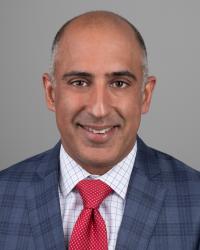This comment letter is part of the USC-Brookings Schaeffer Initiative for Health Policy, which is a partnership between Economic Studies at Brookings and the University of Southern California Schaeffer Center for Health Policy & Economics. The Initiative aims to inform the national health care debate with rigorous, evidence-based analysis leading to practical recommendations using the collaborative strengths of USC and Brookings. The original version of this comment was submitted to the Drug Enforcement Agency on March 17, 2023.
Haiden A. Huskamp, Alisa B. Busch, Pushpa Raja, Michael L. Barnett, Richard G. Frank, and Ateev Mehrotra recently provided comments to the Drug Enforcement Administration (DEA) on a proposed rule on the expansion of induction of buprenorphine through a telemedicine encounter.
Medications for opioid use disorder (MOUD) such as buprenorphine are first-line treatments for opioid use disorder (OUD) with established safety and effectiveness over a broad range of people. Yet most who could benefit from these medications do not get them. At the same time, opioid partial agonists such as buprenorphine involve some risks to patients as well as to other individuals to whom they may be diverted. There are concerns that telemedicine initiation of buprenorphine could lead to inappropriate use. The challenge for regulators is to find the right balance between an overly restrictive system that limits patient access to MOUD and an overly lax system that could result in harm to patients and to the community.
The U.S. has regulated MOUD tightly relative to other countries. In light of the worsening opioid crisis, with fatal overdoses involving opioids nearly quadrupling between 2010 and 2021, a key goal of policymakers in the U.S. is to improve access to effective treatments, especially MOUD. In recent years, Congress and the Department of Health and Human Services have removed many barriers to MOUD and implemented policies expanding coverage of telemedicine for treatment of OUD. Examples include the recent elimination of the X-waiver, which removed caps on how many patients an individual MOUD provider can treat with buprenorphine; the Comprehensive Addiction and Recovery Act (CARA) expansion of buprenorphine prescribing privileges to include nurse practitioners and physician assistants; the SUPPORT Act, which expanded telemedicine coverage to all Medicare beneficiaries with substance use disorders; and recent SAMHSA regulatory proposals for Opioid Treatment Programs (OTPs) that expand the ability to use telemedicine for the initiation of methadone and buprenorphine.
Evidence from their research and that of others leads them to conclude that the DEA’s proposed rule on telemedicine for buprenorphine fails to strike the right balance. The proposed rule is overly restrictive and would likely create more harm than benefit. Specifically, the evidence to date does not support concerns about substantial medication diversion or misuse associated with prescribing of buprenorphine via telemedicine. They are concerned that the new rule would cut off access to buprenorphine for many patients and decrease the number of patients initiating MOUD. In doing so, the new policy could lead to increased overdose deaths.
In this comment letter, the authors summarize evidence on the use of telemedicine for the prescribing of buprenorphine and comment on specific components of the proposed rule.
Read the full comment letter here.
Disclosures: Haiden Huskamp, Alisa Busch, and Ateev Mehrotra have received support from the National Institute of Health. Busch is Chief Medical Information Officer at McLean Hospital. Michael Barnett is retained as an expert witness in state litigation against opioid manufacturers. Mehrotra has also received consulting support or other financial support related to telemedicine from Commonwealth of Massachusetts, NORC, Black Opal Ventures, Sanofi, and Pew Charitable Trusts. Other than the aforementioned, the authors did not receive financial support from any firm or person for this article or from any firm or person with a financial or political interest in this article. Other than the aforementioned, the authors are not currently an officer, director, or board member of any organization with a financial or political interest in this article. This letter does not represent the views of any organization with which the authors are affiliated.
The Brookings Institution is financed through the support of a diverse array of foundations, corporations, governments, individuals, as well as an endowment. A list of donors can be found in our annual reports published online here. The findings, interpretations, and conclusions in this report are solely those of its author(s) and are not influenced by any donation.
-
Acknowledgements and disclosures
The authors thank Carol Graham for her comments on this letter.








Commentary
Op-edComments on the expansion of induction of buprenorphine through a telemedicine encounter
March 21, 2023